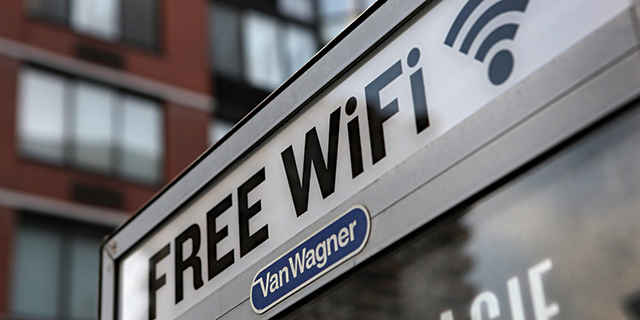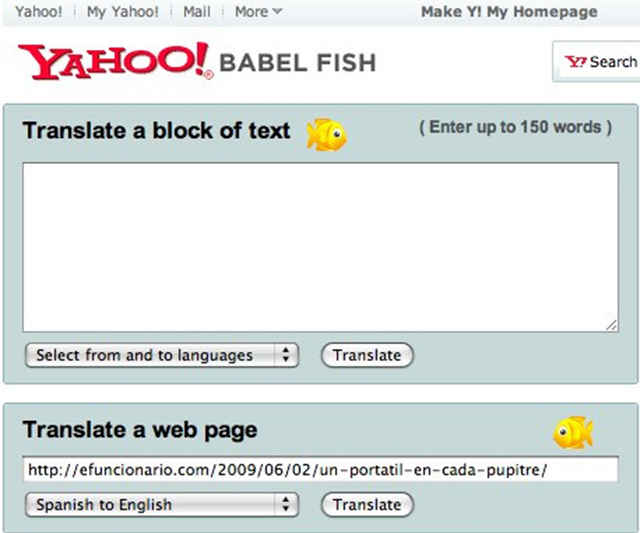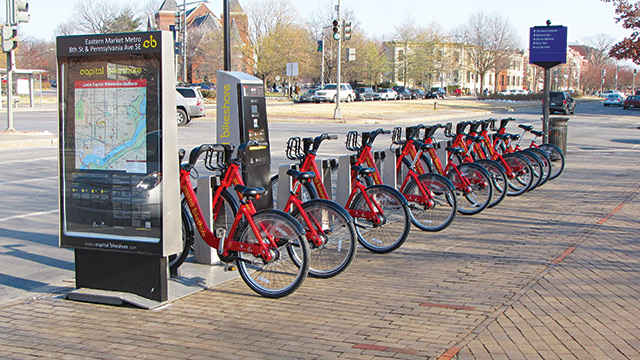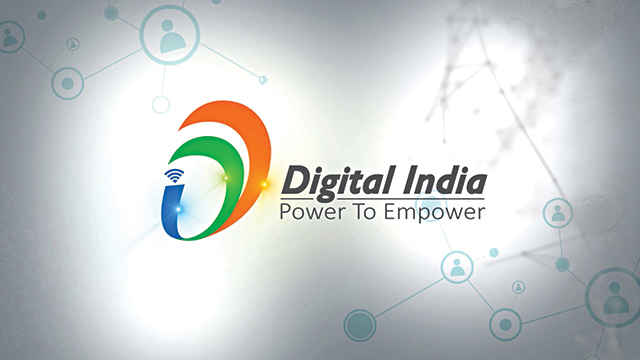7 existing technologies India needs right now!

Enough dreaming of the future and fantastic ways in which technology can help our country…here are a few that already exist, all we need is implementation.
The future is already here — it’s just not very evenly distributed”, said Sci-Fi author, William Gibson in the 1990 documentary, ‘Cyberpunk’.
In the documentary, he discusses the inequality in access to technological developments based on wealth and location. Countries such as Germany, China and Finland have been playing host to such developments for some time now, while India seems to be trailing behind despite being the world’s largest sourcing destination for information technology (IT), an industry that reportedly employs more than 10 million Indians. Let’s look at tech taken for granted elsewhere that could really help India.
1. City-wide free Wi-Fi
A sure sign of a progressive nation is the ability to quickly and easily access the Internet, anywhere and everywhere. South Korea shows us the way here, reportedly the most wired country in the world. In Seoul, you can, as a visitor to the city, log on to their free Wi-Fi and get speeds of about 47 Mbps. When you’re in a new city, you’re usually using a mapping service to get around, and this can result in a lot of data being consumed – at prohibitive costs if you’re roaming. Although cities such as Bangalore and Patna already have free Wi-Fi, more of this is needed, and across the country. Currently, you’re capped to about 50 MB per day or 15 minutes in the day, after which you’re expected to pay. Obviously that should be improved.
Internet service provider Ozone Networks, currently India’s largest public Wi-Fi provider, is one of the facilitators of this service and has over 6,500 hotspots located across the country, including at Haldiram’s, McDonald’s outlets and the Mumbai International Airport. However, beyond the first 30 minutes you need to buy a data pack costing ` 30 and upwards. Earlier this year, the Narendra Modi government allocated a budget of ` 7,000 crore under its ‘Digital India’ initiative to create around 50,000 to 60,000 Wi-Fi hotspots in 2,500 cities across India in partnership with state-run telecom firm, BSNL. We can hardly wait.
Free Wi-Fi is present everywhere in Korea
2. Babelfish
Say you’re backpacking in Europe. All you have to do is whip out your smartphone, key in an input or say a phrase and resources like ‘Google Translate’ and ‘Speak and Translate’ return the result to you in the target language either in text form or as an electronic voice. Similarly, electronic pocket translators let you conveniently translate innumerable number of languages, feature an in-built spell checker, grammar guide and audio to help accurately pronounce words. The biggest advantage of these devices and Google Translate is that they don’t need an internet connection to function. Optical character recognition and translation software on mobiles devices instantly work together when you point your camera at foreign language text such as menus or signboards. India, however, is a different beast!
There’s an Indian proverb that goes: “Every two miles the water doth change and every fourth, the dialect.” Every 500 kilometers or so we have a new language, in whichever direction you go. It’s not just completely different languages, there are also multiple dialects to each language, or a total of 1,653 dialects in the country. For travelers, and those looking to do business across the country, being able to flawlessly converse with locals is imperative – even a slight change in pronunciation can sometimes drastically alter the meaning of your sentence. Also, knowledge of the language breaks down barriers and helps learn about other cultures and communities better. Knowing or attempting to learn the local language shows respect towards the other’s culture – always desirable.
Although we have dedicated software and web-based resources to translate to and from popular Indian languages, these are impractical for when you’re on the go. What we need is a portable universal translator, which has long been a fixture of sci-fi, for the hundreds of purely Indian languages, or, well, the Babelfish.
For all those translations you need to make — Babel Fish to the rescue!
3. Easier digital payments
Those of you who have travelled to Australia in the last few years will have seen people use Visa payWave. It’s almost magical an experience when you first see it. If you’re in line to pay at a grocery store, you’ll see people walk up to the counter, goods are scanned super-fast, and then someone waves their wallet in front of a scanner and walks out. It’s even faster if you have just one item – you can hold it up to the cashier as you approach the till, the amount is already punched in and displayed as you pass the scanner, and in essence you just walk straight out of the door! No signing, no PINs, nothing!
Now in India, perhaps there are security risks that we’d want to protect against for such a system, but we certainly need to cut down on the amount of cold cash being circulated – to reduce corruption, for starters.
India is no stranger to this technology. Pre-paid NFC cards have been used for toll and transport in buses and the metro here for some time now. Recently, banks such as ICICI introduced credit and debit cards with the NFC feature incorporated in them. Axis and HDFC are expected to install around 50,000 and 20,000 PoS machines, respectively by the end of 2015. Earlier, the RBI has restricted the maximum amount per transaction to Rs. 2,000 due to security concerns. This limit has now been lifted due to the inconvenience caused by the previously enforced rule, defeating the very purpose of the cards. Thankfully we’re never far behind the world when it comes to banking, so we can hope for this to come in pretty soon.
To know how NFC payment works, check this video out!

4. Superfast trains
The fastest train in India is currently the Bhopal Shatabdi Express, whose peak speed is recorded as 150 km/h. The upcoming Gatimaan Express clocked a maximum speed of 160-plus km/h in its feasibility tests. The Japanese Shinkansen, however, AKA the “bullet train”, travels at a speed of 320km/h. In April 2015, Japan’s Maglev successfully completed its test run at 603 km/h. Maglev (magnetic levitation) trains float on a cushion of air which eliminates friction, and their streamlined shapes reduce wind resistance. Read more about them at http://dgit.in/maglevtr
Now imagine what this could do for India: A 632 km journey from Mumbai to Goa that currently takes around eight hours, could be cut short to just over an hour!
The major hurdle to this technology coming to India is people and animals straying on to rail tracks and getting hit. It’s not like the railways has a big enough budget either. Last year’s Railway Budget made a provision of only ` 100 crore to build a bullet train in India, whereas a Japan International Cooperation Agency (JICA) report submitted to the Railways Ministry estimates we’ll need ` 170 crore per km to build the bullet train corridor itself. We think it’s safe to assume that we’re not going to be seeing any Maglev train anytime soon.
We are still waiting for this train! Check it here

5. Bicycle culture
Take a trip to Vienna, Austria, and you will see a row of parked bicycles with a touchscreen kiosk near them. This isn’t some sophisticated, anti-theft bike parking, it’s a public service. Austria’s Citybike service lets you pick up and drop off a bike at any of the 120 public rental terminals in Vienna. There’s a one-time registration fee of EUR 1, which is waived for tourists. The first hour is free, after which a usage fee is charged as per the number of hours you’ve taken the bike for – which ranges from EUR 1 to EUR 4.
All you need to do is figure out where you want to go, and if you can cycle there in under an hour, you never need to pay, and you get exercise to boot!
If there’s one thing we need in our larger cities in India it’s bicycles. They help keep our cities clean by eliminating noise and air pollution, reduce traffic congestion and encourage exercise. However, it’s the poor man’s mode of transport here, whereas it shouldn’t be. If we can find a way from preventing them from being stolen, there’s nothing better for our cities. What’s more, we can encourage private players to offer this by offering them advertising space at the bike terminals, within the app that’s used to register, etc. That’s how they do it abroad.
We’ll need better road safety and dedicated cycle lanes if we’re serious about this, however. Spread the word, and maybe we can rouse up enough chatter to have this implemented here as well.
Captial Bikeshare station outside Eastern Market Metro
6. e-Governance
All of us know how much Governance in India needs to improve. We’re not wasting space explaining the problems, instead, we’re looking forward to the cure.
Take the Seoul metropolitan government’s OPEN (Online Procedures Enhancement for civil application) system designed to provide citizens access to online civil applications. If a citizen detects irregularities in the process or outcomes, s/he can file a formal complaint. Even developing countries such as South Africa (in 2000) used Geographic Information Systems (GIS) and GPS tools to track the spread of communicable diseases such as HIV/AIDS and tuberculosis in the country. It’s India’s turn now. The obstacles facing her amongst others are the deeply entrenched organisational routines and lack of knowledge and resources to streamline and automate processes.
The good news is that our government has promised to digitise India with an investment of ` 4.5 lakh crore for various projects to be executed under its ‘Make in India’ and ‘Digital India’ initiatives. Some of the projects to be unveiled by this initiative include Digital Locker (which will host all our important documents in the cloud), e-Sign, e-Hospital (all hospitals will be connected to one another and you’ll be able to book appointments and check lab reports), MyGov Mobile app (allowing citizens to participate in government policy making) and Swachh Bharat Mission app.
Digital India initiative by Modi Governemnt
7. Smart cities
There’s one thing in common between all developed countries – all of them use technology in some capacity to help their citizens realise their full potential. Specifically smart tech, which is the core of smart cities. Be it to enhance safety, protect resources or simply for convenience, India could learn a thing or two from the tech that enables these feats.
Take the example of Barcelona: This smart city monitors utilities such as water, energy and electricity, collects data remotely from these services with the help of sensor technology and analyses it for development of applications to ensure better services. Inspired by the Internet of Everything concept, the Barcelona City Council collaborated with Cisco to create 800 wireless access points. These Wi-Fi routers were mounted on top of the lampposts lining the city and using sensors helped measure temperature, air quality, pedestrian traffic, open parking spaces, etc and send it to city employees for analysis.
That’s not all, it pretty much has all we’ve spoken about before this. Think about living in a city where the elderly are provided with a panic button in case they get injured, have a heart attack, etc. Help comes automatically. They have a smart bus network to help people get to places faster, their gardeners are tech equipped as they need to monitor not just automated watering systems, but also choose what plant would thrive best in a certain spot based on the data they receive from multiple sensors in the area that report the average sunlight, wind speeds, temperature and humidity! Then, there are the other smart systems, such as traffic lights, public bicycles, e-governance, m-schools (schools using mobiles to teach kids), multiple apps to help you navigate the city, free Wi-Fi, easy to find and pay for parking…the works!
Smart city: India Concept – Will this be true anytime soon?

We need a few smart cities. Many of us are residents of Mumbai, and by word do we want these things! That’s not all, since there’s no need to reinvent the wheel, essentially, and all of the technologies we’ve spoken of here already exist, most of these ideas are ripe for private players to take up. (Hint: Use them as start-up ideas).
Millions will thank you if you can successfully implement any of these ideas. Private companies, governments (state or central), we mean you! Here’s hoping that India is able to achieve this and more in the next decade. Jai Hind!








